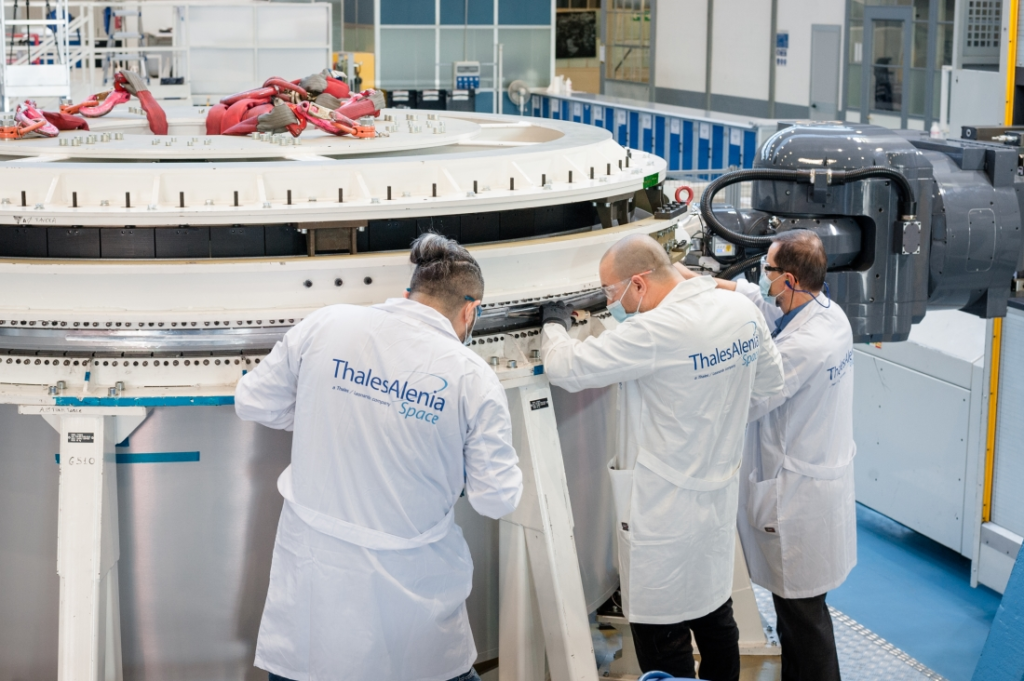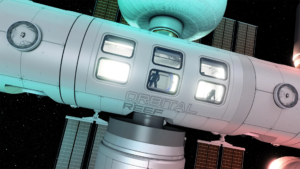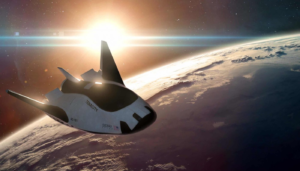
Physical Progress On The Future Moon Space Station Gateway
We are only one mission away from Artemis III, where for the first time in over half a century, humans will once again step foot on the Moon. This time, however, NASA wants to setup a more permanent human presence on the surface. This means launching and transporting immense amounts of infrastructure and supplies to help make that goal a reality.
One of the big projects underway meant to facilitate this plan is the Gateway space station. Gateway is a joint project with contributions from NASA, ESA, CSA, and JAXA. Together they are hoping to create the first significant moon orbiting station which will help shelter crew and provide them with unique benefits during different missions. In terms of progress, right now multiple of the station’s primary modules are being manufactured.
This includes the two first modules being launched together, HALO and PPE. The science disciplines to be studied on the Gateway are expected to include planetary science, astrophysics, Earth observation, heliophysics, fundamental space biology, and human health and performance, just to name a few. Here I will go more in-depth into the physical completion of these modules, their purpose and design, what to expect in the future, and more.
Physical Progress

Back in July 2021, Northrop Grumman finalized a contract with NASA to provide the Habitation and Logistics Outpost (HALO) module for NASA’s Gateway. Under the $935 million contract, Northrop Grumman is expected to complete the design and development activity currently underway and will also be responsible for integrating HALO with the Power and Propulsion Element provided by Maxar Technologies.
Around that same time period, Thales Alenia Space signed a contract with Northrop Grumman to develop the pressurized module for HALO. HALO is planned to be the initial habitat for astronauts visiting the Gateway. Its primary purpose is to provide basic living space for astronauts and prepare for their trip to the lunar surface. It will provide command, control and data handling capabilities, energy storage and power distribution, thermal control, communications and tracking capabilities. It will be equipped with 3 docking ports for visiting vehicles and future modules, as well as space for science and stowage. With NASA’s Orion spacecraft docked, it will be able to sustain up to four astronauts for up to 30 days as they embark on, and return from, expeditions to the lunar surface.
In early 2021, Thales Alenia Space marked the first major milestone regarding the Lunar quest: the welding of two components, a ring and a cylinder for HALO, initiating the assembly of the module’s primary structure. In total, Thales Alenia Space will be responsible for the design and manufacturing of the HALO primary structure (the pressurized module), the module and vestibule pressure control, part of the meteoroid protection system as well as the structure interfacing with the NASA docking systems. The HALO design is derived from Northrop Grumman’s Cygnus spacecraft, which Thales Alenia Space is a longstanding partner on. Cygnus is a human-capable vehicle that delivers supplies, spare equipment and scientific experiments to the International Space Station with 14 successful missions to date. HALO will have the same 3m diameter as Cygnus, but will include a 1m stretch in length to meet habitable volume needs for visiting crews, bringing the total HALO length to about 7m. HALO will also benefit from the heritage of the Cygnus Pressurized Module design and production process already in place.
Walter Cugno, Vice President Exploration and Science Domain at Thales Alenia Space added “By leveraging the active Cygnus production line and flight proven expertise, Thales Alenia Space will bring to Northrop Grumman the unique capability of providing an affordable and reliable HALO module in the timeframe needed to support lunar exploration. This more than 10-years success story as well the strong Thales Alenia Space expertise in deep space habitats, will allow us to design and manufacture this new lunar Gateway module in the respect of safety and comfort for the astronauts”. In addition, as astronauts live and work on Gateway to enable sustained exploration and research in deep space, their efforts will be made possible by the Power and Propulsion Element (PPE). The PPE is the other main element that will launch and work together with HALO. A foundational component of the lunar outpost and the most powerful solar electric spacecraft ever flown, PPE will provide Gateway with power and allow it to maintain its unique orbit around the Moon. In this case, NASA partnered with Maxar Technologies to design and build PPE. These two segments are scheduled to launch together on a Falcon Heavy in late 2024.
Gateway

In addition to HALO pressurized module, in 2020 it was announced that Thales Alenia Space will develop two more key modules for the upcoming Lunar Orbital Platform–Gateway: I-HAB (International Habitat) and the ESPRIT communications and refueling module. These two modules are the European contribution for Gateway. The first tranche of I-HAB contract, (worth 36 million euros, the global amount being 327 million euros), has been signed with the European Space Agency (ESA), while ESPRIT development has already started under Authorization To Proceed (ATP) with a contract signature expected by the end of the year.
The station, weighing about 40 metric tons, will be automatically assembled piece by piece in a near rectilinear halo orbit (NRHO) around the Moon. The final configuration will mainly comprise habitation modules for the crew offering as well docking capabilities for visiting vehicles and the Orion space capsule, logistics modules, communications with the Earth and Moon, EVA airlocks for scientific experiments and crew extravehicular activities (EVA), as well as a robotic arm. It is not intended for permanent occupancy, but will be able to host 4-person crews for periods of one to three months. Gaining new experiences on and around the Moon will prepare NASA to send the first humans to Mars in the coming years, and the Gateway will play a vital role in this process.
Taking a closer look at I-HAB, this pressurized module will provide crew living quarters, plus docking points to supply interfaces and resources to vehicles in transit. It’s important to point out that Thales Alenia Space has a lot of experience as they were responsible for multiple pressurized modules for the ISS, along with other technology. The module is expected to meet evolving requirements and performances for lighter structures and optimized micrometeorites protection system, evolved docking systems and hatches, enhanced functional and avionic architectures, more efficient thermal control system with deployable radiators to ensure full autonomous capability of heat rejection, and innovative conditioning systems.
The I-HAB will experience for the first time long exposure in the deep space environment, offering the opportunity to test and prove potential design solutions for protection against cosmic radiations. Being unmanned for most of its time on orbit, it will also require dedicated solutions for the robotic operations, either on board or externally. One of the key evolving steps with respect to the ISS will be focused on design, with the support of virtual reality technique, more comfortable internal accommodations, with the exploitation of modular and reconfigurable solutions to optimize room and comfort for the crew. The module will be provided by Europe with contributions from other space Agencies like environmental and life support systems from JAXA, avionics and software parts from NASA, and robotic components from CSA.
The European System Providing Refueling, Infrastructure, and Telecommunications ESPRIT consists of 2 main elements. The first, named HLCS (Halo Lunar Communication System), ensures the communications between the Gateway and the Moon. ESPRIT includes a second part named ERM (ESPRIT Refueling Module) which combines the refueling of the Gateway with a small pressurized module with windows. ERM will provide active refueling of the Gateway with xenon and chemical propellants to extend its life but also prepare for a re-usable Lunar Lander or Deep Space Transport (to Mars). ERM’s pressurized tunnel provides wide windows offering a 360° view of Space, the Moon, and Earth. This pressurized volume will also contain various logistics and other elements for the crew.
As partially mentioned prior, Gateway is planned to be deployed in a highly elliptical seven-day near-rectilinear halo orbit around the Moon, which would bring the station within 1,500 km (930 mi) over the lunar north pole surface at the closest approach and as far away as 70,000 km (43,000 mi) over the lunar south pole. Traveling to and from cislunar space is intended to develop the knowledge and experience necessary to venture beyond the Moon and into deep space. The proposed NRHO would allow lunar expeditions from the Gateway to reach a low polar orbit with a delta-v of 730 m/s and a half a day of transit time. Not to mention, Orbital station-keeping would require less than 10 m/s of delta-v per year, and the orbital inclination could be shifted with a relatively small delta-v expenditure, allowing access to most of the lunar surface. All of which led to the decision to use this unique orbit.
Conclusion
Right now different companies contracted by various agencies are working on the Gateway space station segments. Thales Alenia Space has a lot of experience and was selected to build at least three of the station’s future modules. As time goes on, we can expect more updates from the company and the completion of HALO and PPE first. We will have to wait and see how it progresses and the impact it has on the space industry.



